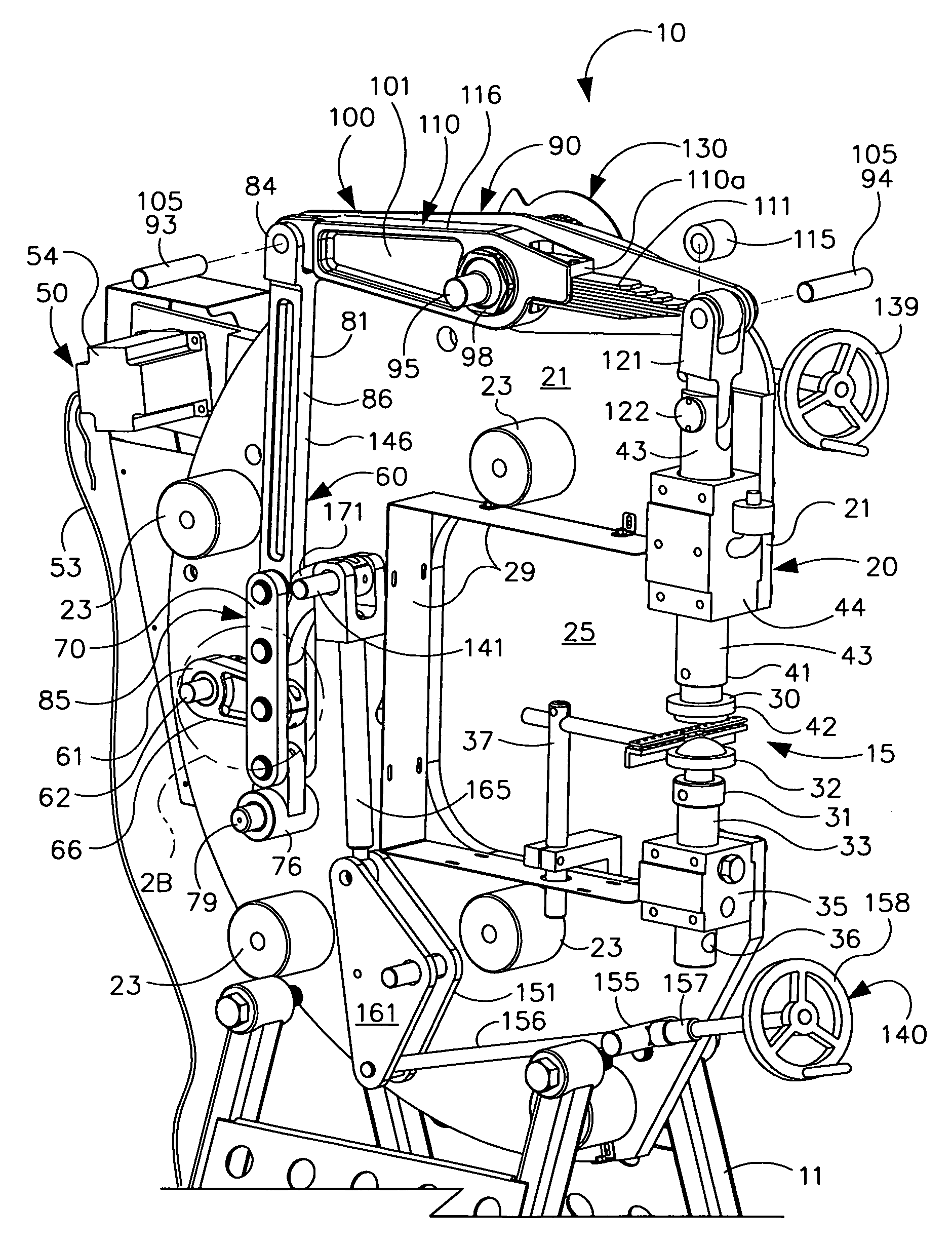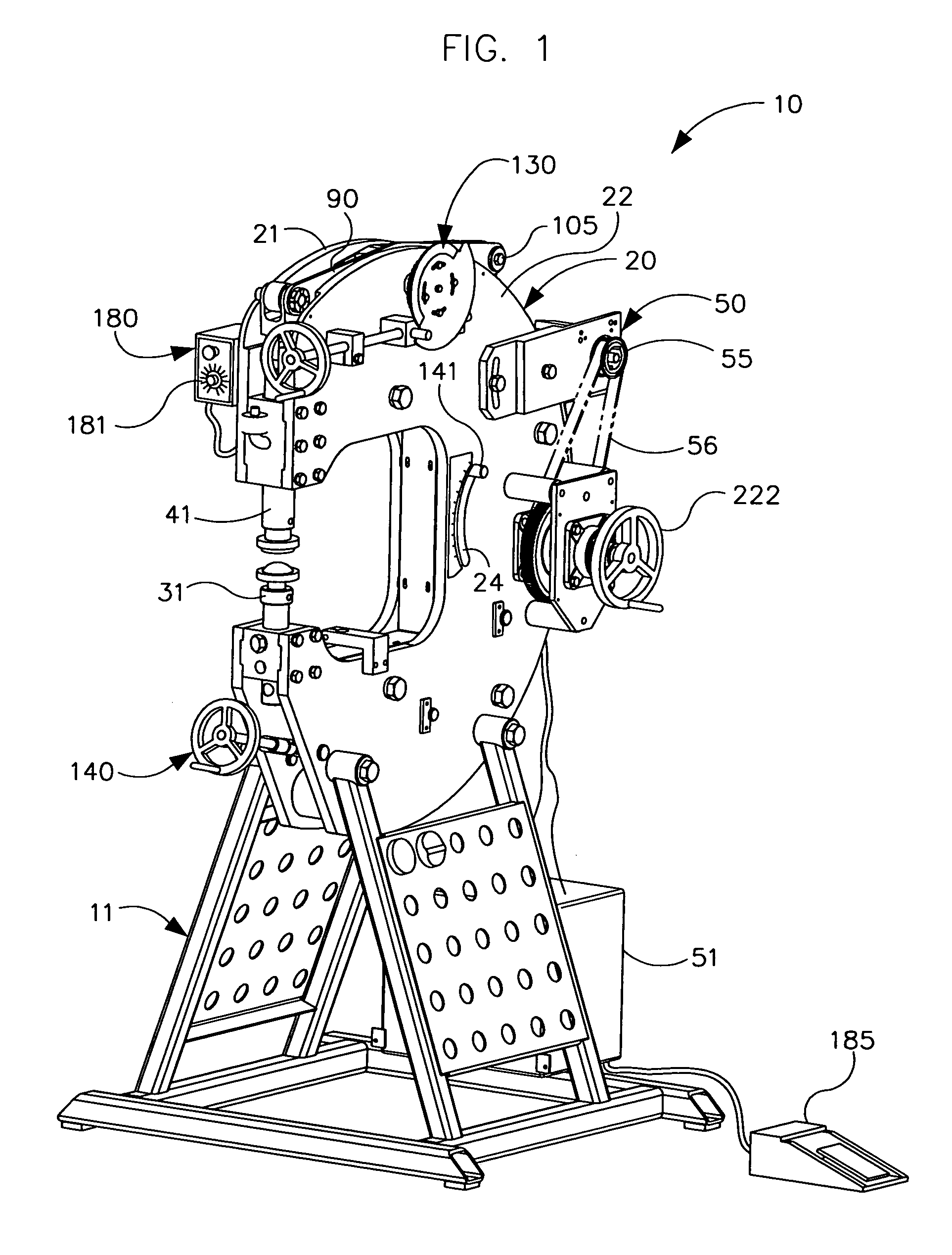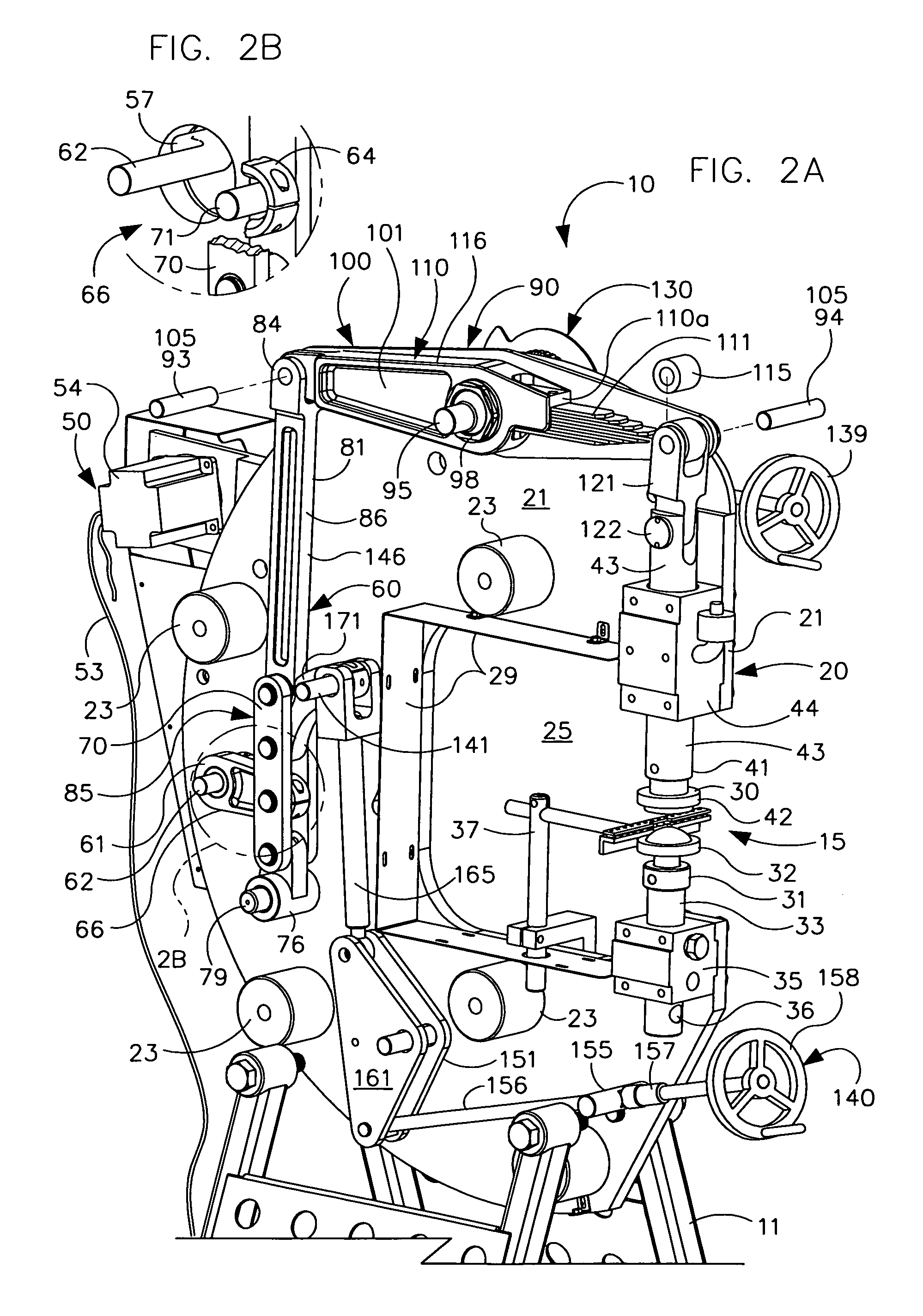Multi-mode hammering machine
a multi-mode, hammering machine technology, applied in forging/pressing/hammering apparatus, forging tools, forging presses, etc., can solve the problems of ram stroke and crushing of metal, not necessarily producing all the metal flow or completely compressing the metal sheet, and not being strong enough to compress and reduce the thickness of metal workpieces
- Summary
- Abstract
- Description
- Claims
- Application Information
AI Technical Summary
Benefits of technology
Problems solved by technology
Method used
Image
Examples
Embodiment Construction
[0043]While this invention is susceptible of embodiment in many different forms, the drawings show and the specification describes in detail a preferred embodiment of the invention. It should be understood that the drawings and specification are to be considered an exemplification of the principles of the invention. They are not intended to limit the broad aspects of the invention to the embodiment illustrated.
[0044]The present invention relates to a multi-mold hammering machine for shaping a workpiece 5 such as a sheet of metal. The multi-mode hammering machine is generally depicted as reference number 10 in FIG. 1. The machine 10 has a rigid meal shaping mode 190 where its ram has a rigid non-flexible stroke length. The machine 10 is readily switched from this mode to a flexible power hammer mode 200 by removing a conversion pin. In this mode, the ram has a flexible stroke length that varies with machine cycle speed. This power hammer mode utilizes a harmonic force multiplier to p...
PUM
| Property | Measurement | Unit |
|---|---|---|
| ram stroke length SLMax | aaaaa | aaaaa |
| ram stroke length | aaaaa | aaaaa |
| weight | aaaaa | aaaaa |
Abstract
Description
Claims
Application Information
 Login to View More
Login to View More - R&D
- Intellectual Property
- Life Sciences
- Materials
- Tech Scout
- Unparalleled Data Quality
- Higher Quality Content
- 60% Fewer Hallucinations
Browse by: Latest US Patents, China's latest patents, Technical Efficacy Thesaurus, Application Domain, Technology Topic, Popular Technical Reports.
© 2025 PatSnap. All rights reserved.Legal|Privacy policy|Modern Slavery Act Transparency Statement|Sitemap|About US| Contact US: help@patsnap.com



